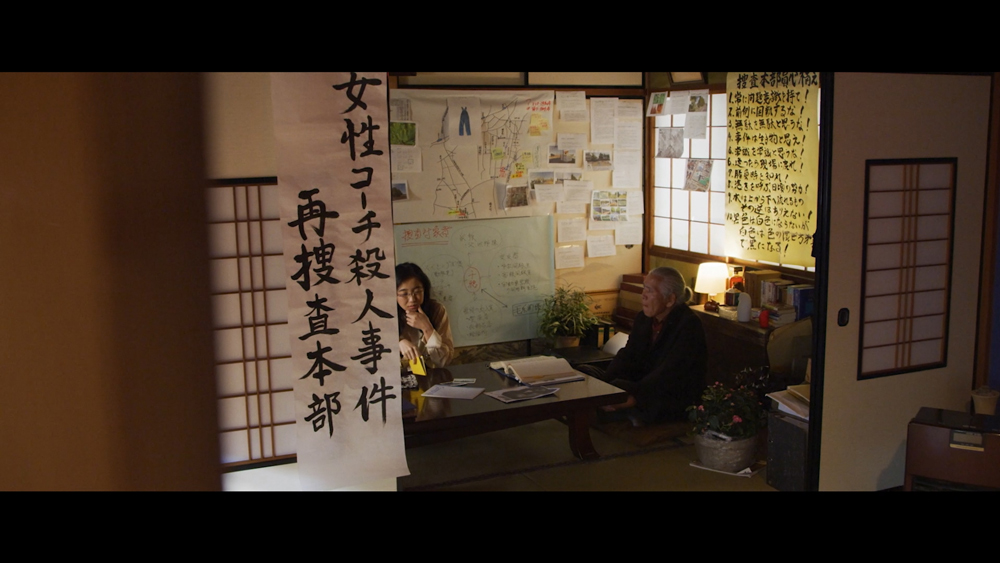!["Torao" Director Kazuya Murayama Depicts the aftermath of an unsolved case starring a real former detective [Director's Interview Vol.242]](https://cinemore.jp/images/203a790d3185794af0f38552ff47eec5a3692b3406528479c80d27c4061a5768.jpg)
(C) “Torao” Production Committee
"Torao" Director Kazuya Murayama Depicts the aftermath of an unsolved case starring a real former detective [Director's Interview Vol.242]
Reason for portraying the criminal of an unsolved case
Q: This movie depicts the true culprit quite clearly. As an audience member, I'm confused as to whether or not this should be treated as fiction, and I sense the strong will of the director, but what was your intention in including a description that clearly identifies the culprit?
Murayama: After doing a lot of research on my own, I can say that I had a clear intention in using that expression. If I wasn't also the producer and there was someone in an objective position, it might have come out a little differently, but for better or for worse, I was the only one there. I can only say that I did it on my own will.
However, legally speaking, there is a statute of limitations, so there are some things you can and cannot say. Just as Torao-san still regrets that rumors about the wrong culprit were spread when he was an active detective, there is a possibility that I will spread other rumors with this movie. It's a sensitive area, so I think we have to be careful about it. Because of this movie, someone might be made a culprit and be wiped out from society.
But I also have my own sense of justice in drawing it that far. The underlying purpose is to go beyond the framework of the movie and move on to real-life events. The case can't be solved anymore because the statute of limitations has expired, and I don't want people to come forward as the culprit, but I want them to feel something, and I want it to be as close to reality as possible, or rather, to create a barrier between the movie and reality. I wanted it to be something that would shake things up.

“Torao” (C) “Torao” Production Committee
Q: Even though it deals with real-life incidents, the main focus is never on solving mysteries. The lines also challenge the idea that things are forgotten and are said to be ``living fossils'' or ``over.''
Murayama: That theme does exist. It's not a work that ends comfortably with all the different notes. I thought it would be easier to understand if there was an explanation like ``this is what happened'' at the beginning, but even though I was hesitant about that, I settled on this format.
Personally, I get turned off by things that are too easy to understand or have too many lines, so I want to leave as much room for the audience's imagination as possible. I thought it would be different to use narration to explain the story, and as the movie progresses, more information will be provided, so that in the end you can understand what the incident is about.
Q: Mr. Torao says that he regrets that the police's mistakes caused him to be falsely accused, and that he wrote the book in order to clear up his feelings. I think that was mentioned in the early plot, but not in the finished product, right?
Murayama: I had filmed that scene, but I thought it would require too much explanation and would distract from the main story, so I took it out. It's difficult to depict why something like this happened when someone else who isn't the real culprit is suspected, and if you depict it in a movie, you might end up reinforcing the rumors. However, the fear of being falsely accused is included in the ``10 Investigation Points'' written by Torao in the movie.
Q: Mr. Torao's book also has a strong meaning of indicting problems in the police organization.
Murayama: I'm trying to cover that to some extent in the scene where Torao's colleague, a former detective, appears, but it's difficult to touch on the dark side of the police, and there are still a lot of elements to depict. It becomes too much. I thought it would be cool to include Tora-o-san's past appearance in flashbacks, so I limited the past scenes to those surrounding the murdered victims.
Q: In the murder scene, the person who plays the victim is Kayako Kato, right? Takako, who has been following the incident, relives the incident as if it were her own.
Murayama: Did you understand that? I filmed it so you wouldn't notice much, but in that scene the actor was replaced by Mr. Kato. The scene where Kayako is told that she looks like the victim also had a purpose, and I added it later to connect with Kayako's motivations.
I believe that movies can change the world.

